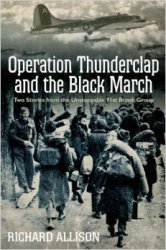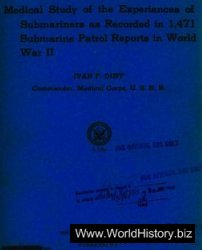January 15, 1927, the U. S. Post Office collects bids for operation of the country’s transcontinental airmail route. Offered in two sections Contract Airmail Route No. 18 (CAM-18), the Chicago-San Francisco western half, has bids from Western Air Express, Stout Air Services, and timber magnate and aircraft builder William “Bill” Boeing, who has been encouraged by Edward Hubbard and Clairmont “Claire” L. Egrvedt. Having banked on the superior ability of his new Boeing Model 40A mailplane, designed by Egrvedt, Boeing underbids the competition and wins the contract on January 29 with an unprecedented low offer of $2.88 per pound.
Departing his Seattle-Victoria Air Mail Line, Hubbard moves to Salt Lake City to organize and operate Boeing Air Transport. Philip
G. Johnson is named president and he, in turn, appoints former second assistant Postmaster General Duard B. Colyer as vice president-operations. Meanwhile, engineer Egrvedt completes production of the necessary 24 aircraft.
In May-June, 21 former U. S. Air Mail Service pilots are hired, 4 of whom possess over 4,000 hours of flight time: James P. Murray (4,380), James H. Knight (4,282), E. Hamilton Lee (4,220), and Frank R. Yager (4,009). All of the Model 40As are prepositioned to their various stations by the end of June.
A pair of Air Mail Service DH 4Bs land at Omaha from Chicago at midnight on June 30/July 1; the mail sacks are loaded aboard a pair of new BAT 40As and the commercial carrier inaugurates CAM-18 in the dark.
During its first six months of operation, BAT’s Boeing 40As undertake 2,300 flights, with a total of 8,282 flying hours over 815,256 miles. Altogether, 525 passengers are flown and, more importantly for income, 298,372 pounds of mail.
On January 1, 1928, after several months of discussions, the company pays Chairman Vern C. Gorst $94,000 ($200 per share) to acquire a controlling interest in his Pacific Air Transport (PAT). The company is allowed to operate as a subsidiary under its previous name and with all of its employees. The acquisition gives BAT a direct route from Seattle to Los Angeles.
On February 26, a Boeing 40A en route to Cheyenne from Omaha crashes near Marquette, Nebraska (one dead). Near Federal, Wyoming, on March 17, a Boeing 40A crashes in a snowstorm (one dead). Designed as successor to the Model 40A, the trimotored Boeing Model 80 unequal-span biplane makes its maiden flight during August.
On October 30, Boeing Airplane and Transport Corporation is formed as the holding company for both BAT and PAT (the Boeing System). On December 17, PAT is merged completely, becoming a BAT division. Six days later, a Boeing 40B, caught in a snowstorm and seeking Omaha’s airport, crashes.
An ungraded version of the Model 40, the Boeing Model 95 makes its inaugural flight on December 29.
During the year, airline employment grows to 120, including 35 pilots. BAT transports 1,863 passengers, 418.5 tons of mail, and 74.5 tons of express over 2.17 million miles.
The first three of six new Boeing 95 mail planes are delivered in January 1929.
While landing at Fort Crook, Nebraska, on January 6, a Boeing 40B, the pilot of which is blinded by floodlights, crashes.
On February 1, William E. Boeing and Frederick B. Rentschler of Pratt & Whitney Aircraft Company merge their operations and holdings to form United Aircraft and Transport Corporation. Combined capitalization is $146 million. The Boeing System remains the airline operating subsidiary.
Twelve days later on February 13, a Boeing 95 strikes a tree while landing at Omaha; the pilot escapes injury. On March 11, an iced-up Boeing 40B crash-lands near Park City, Utah; no one aboard is hurt.
Later in the spring, BAT aircraft are equipped with the first U. S. airline aerial radiophone s, which allows direct ground-to-air voice contact with a series of ground stations, built under government supervision, between Oakland, California and Chicago. On May 1-2, three newly received 12-passenger Boeing 80s are employed to inaugurate regularly scheduled, nine-hour, night passenger service on the San Francisco to Salt Lake City route; BAT thus becomes the first U. S. airline to have regularly scheduled night frequencies.
On May 22, a Boeing 80 makes a forced landing while taking off from Elko, Nevada; none of the nine people aboard are injured.
With the delivery of seven additional Boeing 95 s on June 30, the day United Aircraft and Transport Corporation gains control of Stout Air Services, BAT has significantly enhanced the speed with which its mail shipments can be delivered.
A Boeing 95 crash lands at Elm Creek, Nebraska, on October 18 and burns out; the pilot is not hurt.
Also in October, the success of the Model 80 leads Boeing to upgrade his transports into Model 80As, the first of which is placed into service between San Francisco and Salt Lake City in mid-month. On December 18-19, a Boeing 80 hits a hill and crashes near Loomis, California; a pilot and passenger are hurt. A total of 2,850 passengers and 1.8 million pounds of mail are carried over 2.78 miles for the year.
On January 10, 1930, a Boeing 95 crashes near Sidney, Nebraska (one dead). In the spring, new Model 80A pilots are recruited and complete their orientation, primarily with Model 80s, on the California-Utah run. On April 29, Congress passes the McNary-Watres Act. During the spring, nurse Ellen Church proposes to airline official S. A. “Steve” Simpson that BAT add registered nurses to assist nervous and sometimes airsick passengers. When Simpson proposes the idea to President Johnson, he receives a one word answer: “No!” After reconsideration, Johnson authorizes Simpson to employ Church to recruit several single nurses under the age of 25.
On May 1, daily San Francisco-Chicago Model 80A flights begin via Salt Lake City, North Platte, Lincoln, Omaha, Des Moines, and Cedar Rapids. The western end of the route is flown in darkness. As a result of the acquisition of National Air Transport (NAT), United Aircraft and Transport is able to inaugurate the first transcontinental airline system on May 7.
On May 15, eight female nurse flight attendants (Ellen Church, the world’s first stewardess, plus her colleagues Alva Johnson, Margaret Arnott, Inez Keller, Cornelia Pederman, Harriet Fry, Jessie Carter, and Elis Crawford), clothed in special dark green uniforms, begin serving on BAT return flights San Francisco-Chicago. The initial duties of these pioneers are unglamorous. They provide cotton to passengers to muffle noise and aid them if they become ill and point travelers to the toilet door and not the similar emergency exit. They bolt seats to the floor before every flight and to oversee smoking and butt disposal. They take charge of any lunches provided, provide route information to the curious, and, in the event of forced landings, carry a railway timetable.
Between May 15-June 9, company officials participate in the so-called “Spoils Conference” held in Washington, D. C. between Postmaster General Walter Fogler Brown and representatives of major air transport concerns. Although President Johnson preserves the BAT routes, he obtains no new ones. A Boeing 80A crash-lands (without injury to its occupants) at Dix, Nebraska, on June 22.
On June 30, United purchases Varney Air Lines, expanding its services to the northwestern city of Seattle. On August 31, Stout Air Services is merged into NAT, disappearing as an independent entity but giving NAT the equipment necessary to carry passengers. Also in August, the first eight stewardesses complete their probationary period and Ellen Church is directed to recruit 20 more. United Aircraft now operates four airline divisions: BAT, PAT, NAT, and VAL.
On March 2, 1931, a Boeing 40B-4 catches fire while en route south of Glide, Oregon. The pilot puts the ship down in a clearing and is joined by his passenger in putting out the blaze, saving the express and mail aboard.
Meanwhile, each corporate division continues to operate under its own name until April 1, when BAT and NAT begin using the marketing name United Air Lines. On that day, the two divisions integrate their transcontinental operation, offering the first day and night airmail and passenger service. The westward flights require 31 hrs. 18 min. and the eastbound, 27 hrs. 39 min. A total of 18 stewardesses are available for the assigned airliners. On July 1, the United Air Lines title becomes official as the four operating airlines are organized into “The World’s Largest Air Transport System.”




 World History
World History









